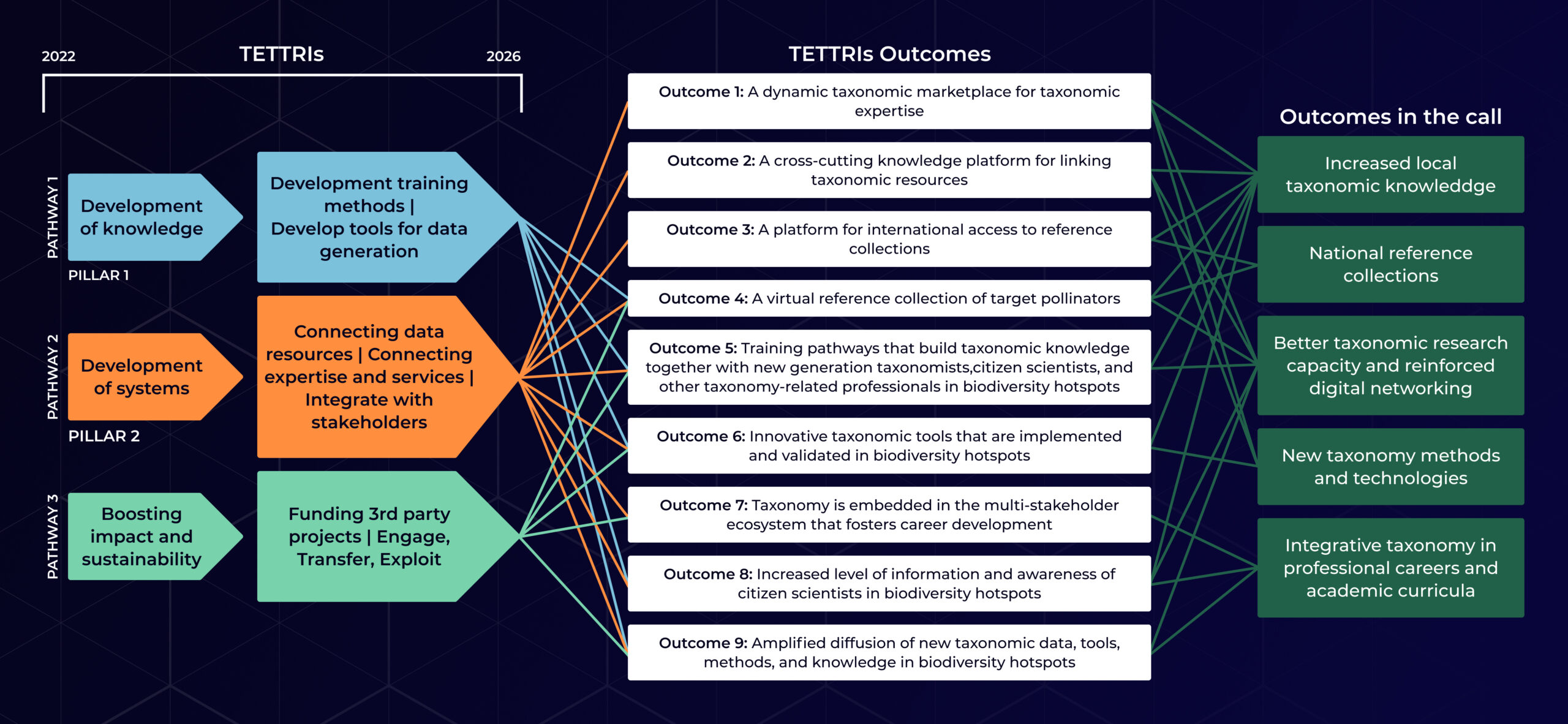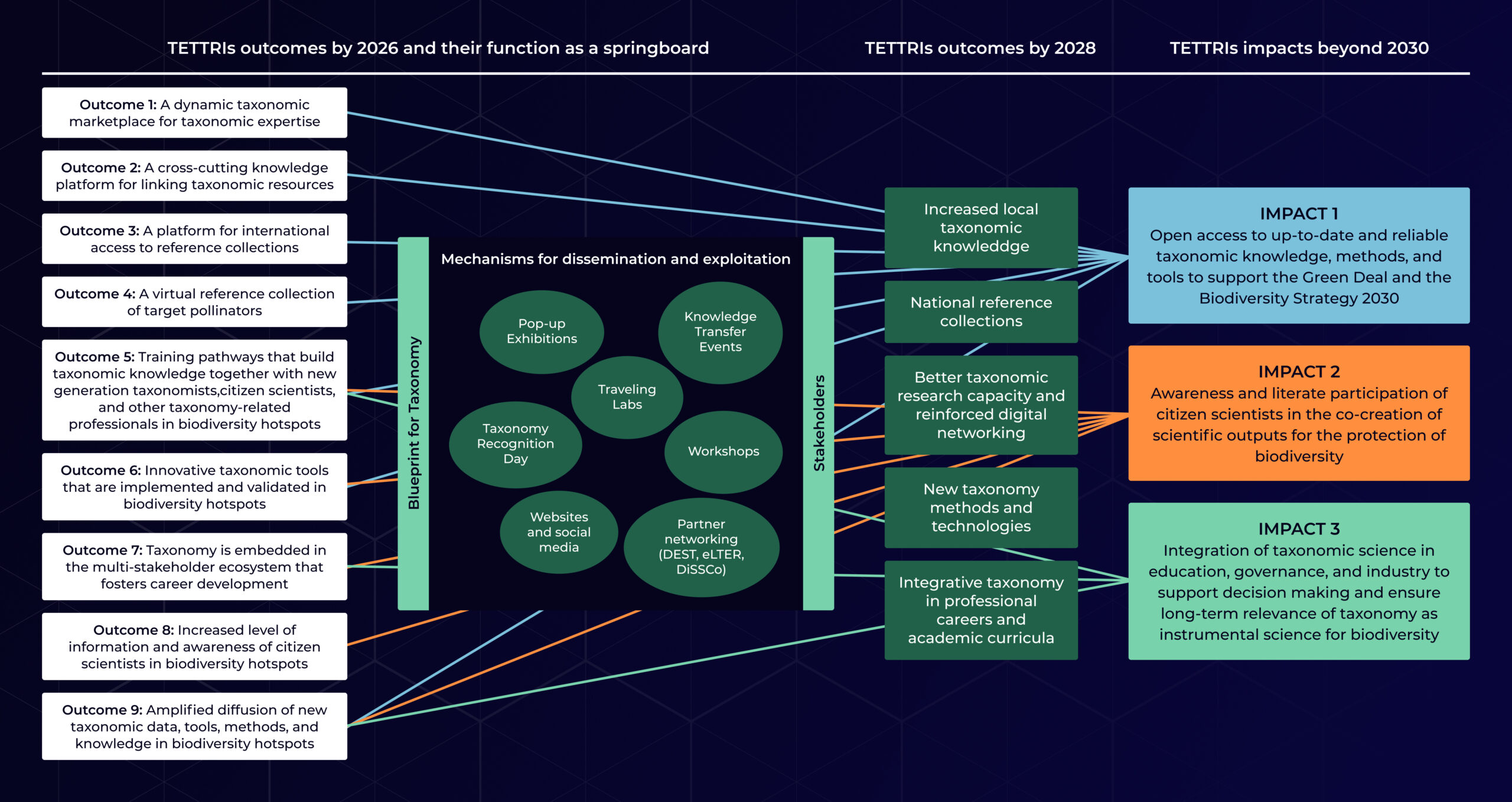Impact
TETTRIs aims to leverage a greater impact
The availability of taxonomic knowledge and expertise is fundamental to understanding biodiversity and taking the measures to conserve and restore it. TETTRIs supports the Green Deal, and new European biodiversity governance framework and decision-making processes, as foreseen by the Biodiversity Strategy 2030. TETTRIs uniquely contributes to this scope and overall impact by focusing on developing knowledge and systems through building on existing reliable structures, implementing innovation, and enabling and incentivising external stakeholders to participate in the process.
Impact 1: Open access to up-to-date and reliable taxonomic knowledge, methods, and tools to support the Green Deal and the Biodiversity Strategy 2030
Impact 2: Awareness and literate participation of citizen scientists in the co-creation of scientific outputs for the protection of biodiversity
Impact 3: Integration of taxonomic science in education, governance, and industry to support decision making and ensure long-term relevance of taxonomy as instrumental science for biodiversity
Achieving the project vision by 2026
Expected outcomes and impacts
To achieve the expected outcomes and make a major contribution to “Biodiversity and ecosystem services: Biodiversity is back on a path to recovery, and ecosystems and their services are preserved and sustainably restored on land, inland water and at sea through improved knowledge and innovation”, 3 pathways are established
- PATHWAY 1: DEVELOPMENT OF KNOWLEDGE
- PATHWAY 2: DEVELOPMENT OF SYSTEMS
- PATHWAY 3: BOOSTING IMPACT AND SUSTAINABILITY



